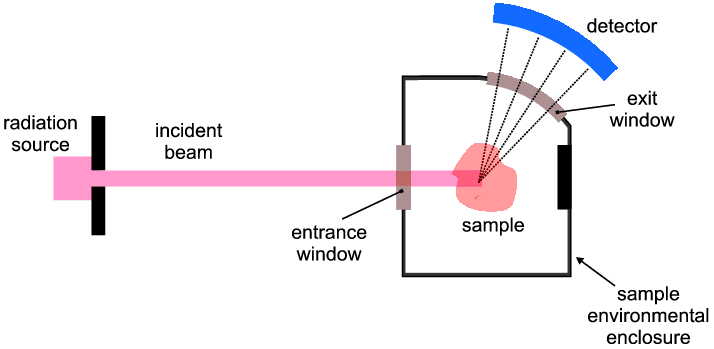 |
3 Terms and a Global Look |
 |
3 Terms and a Global Look |
3 Terms and a Global Look
We have some difficulty finding a concise name or definition for the field we are currently entering. There are indeed sizeable powder diffraction communities already involved with, what could loosely be described as, "static" analysis of materials, involving:
However we are not looking here particularly at these aspects; rather we are interested in what can be learned about materials "in action"; this aspect has been one of the exciting trends of the last 2 decades, brought about mainly by the increase in powerful X-ray and neutron radiation sources and by the developments in detector technology. Previously many processes had to be studied by "before and after" methods in which the structure/composition of materials could only be examined in a coarse way: to get even an inkling of what was happening during the process one had to stop that process, take the material out as it were and assume the process had not been disturbed. We are now in a position to realise that those assumptions were often very wrong: true rates of reaction were often much faster or slower than that perceived by the conventional wisdom, sometimes with totally unexpected composition profiles (unknown intermediate phases etc.). It can be said that in many cases our understanding of materials and chemical processes has been completely changed by the opportunity to "watch" processes in-situ using powder diffraction.
Three terms, time-resolved, in-situ and non-ambient keep cropping up in the present context (a fourth, dynamic diffraction, is also used but is covered by the other 3). By these terms we mean:
To perform a time-resolved, in-situ, non-ambient powder diffraction study (a mouthful!) requires harmonisation of all the components of the set-up. The various items are illustrated schematically below:

However these components are not independent; for example, the type of detector used bears upon the size of the exit window which in turn affects the performance of the sample environment enclosure; the speed of the changes under study in the sample puts demands on the radiation source and the speed of the detector, and so on. A "plug in" approach is not always possible and for this reason we need to look at all the components in this section.
|
© Copyright 1997-2006.
Birkbeck College, University of London.
|
Author(s):
Paul Barnes Martin Vickers Simon Jacques |